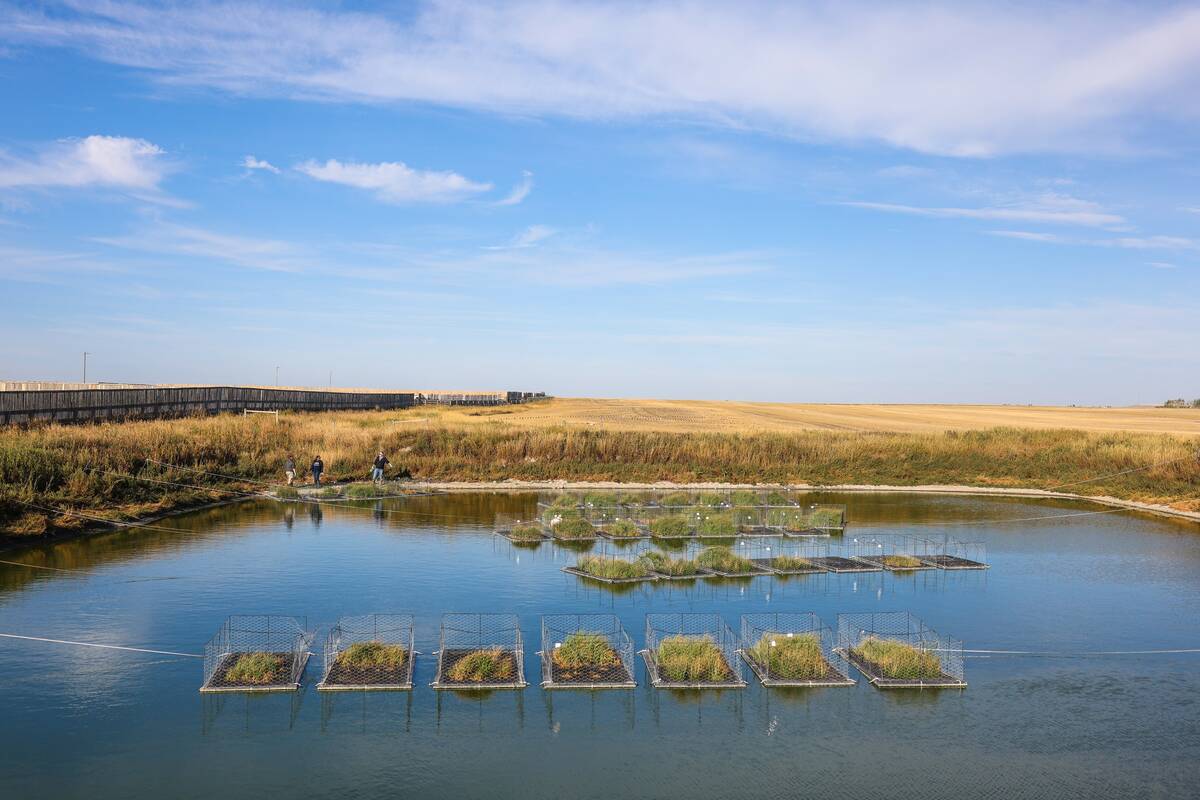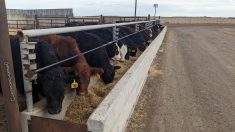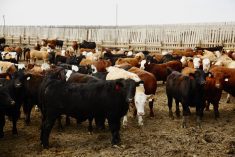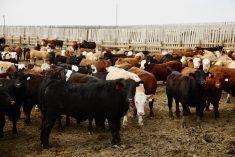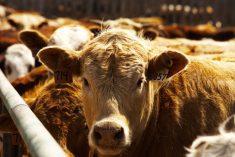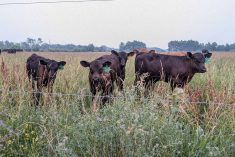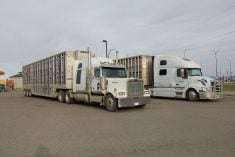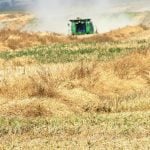Plants can play a big part in boosting the health of a water source, and researchers at Olds College want to give them a starring role.
Floating islands deployed in a feedlot run-off pond can improve water quality by removing contaminants. The islands float in the middle of a pond, roots growing deep into the murky water.
The plants absorb pollutants through their roots and fibres and can naturally clean soil and water. When they’re used to remove nutrients and contaminants from water, the process is called phytoremediation.
Read Also
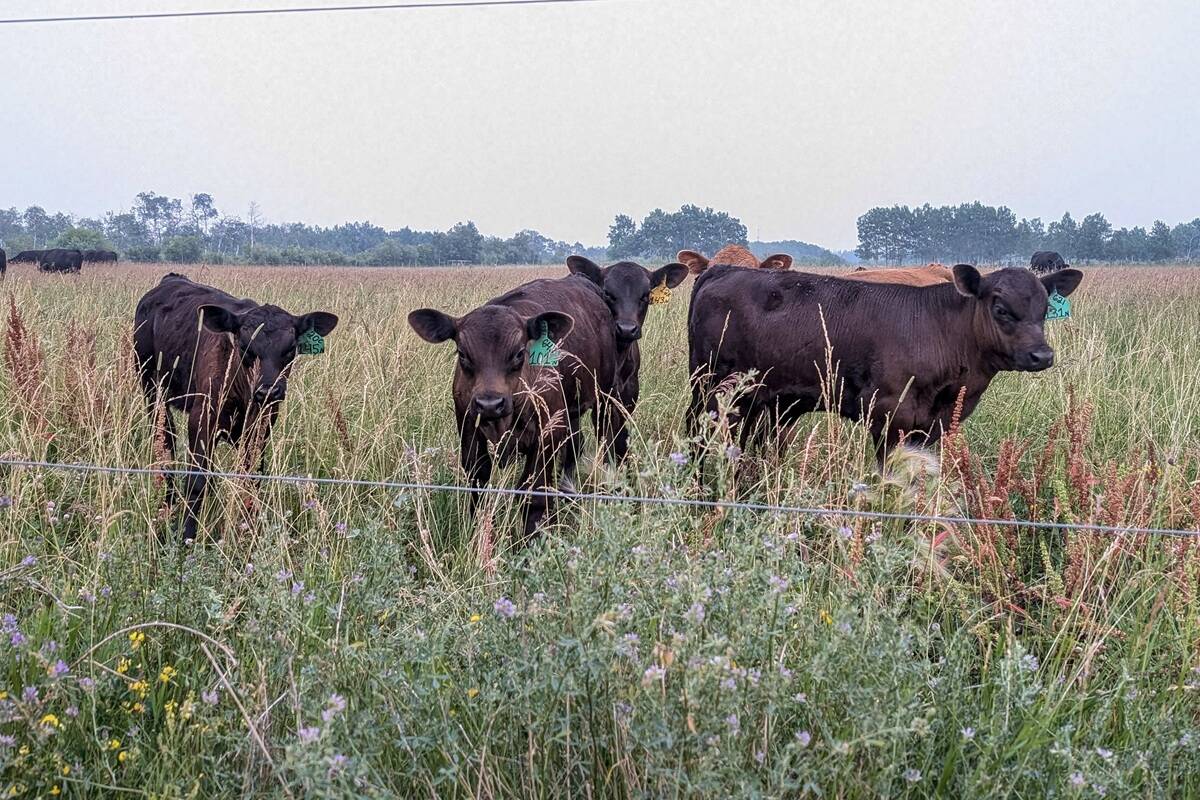
Methane-reducing solutions for beef cattle have a ways to go, say Canadian scientists
Companies developing vaccines that inhibit methane (CH4) production in cattle are facing challenges, say experts, and in the process finding their development is more complex than first thought.
The floating islands are a patented technology created by Tannas Conservation Services. They are four feet by eight feet. Plants are placed on the islands and the root systems reach into the water body, where they then take up nutrients and other contaminants from the water.
These islands have been used to treat a variety of wastewater sources, including a coal mine in Alberta, a diamond mine in Ontario and city stormwater in Lethbridge, Alta. But Daniel Karran, the principal investigator at Olds College, wanted to see if using the islands has the same benefit in different livestock sectors. The idea is to prevent issues such as algae blooms from excessive nutrients.
“We do see this as a tool in the toolbox,” Karran says.
There were three phases of this study, starting in 2020. In phase one, they had the floating islands in tubs of water in a greenhouse. Researchers spiked the water with different nutrients to examine how the plants would react and measure what the plants would take up.
They then moved water from a feedlot pond into the greenhouse tubs for phase two of the study. Several species removed phosphorus and potassium from the water.
Phase three involved moving the islands into the real world and monitoring them on actual feedlot ponds.
For phase three, they used three sites — two with islands installed and one as a control site. They installed the islands in 2022, and 2024 was their last year monitoring the research.
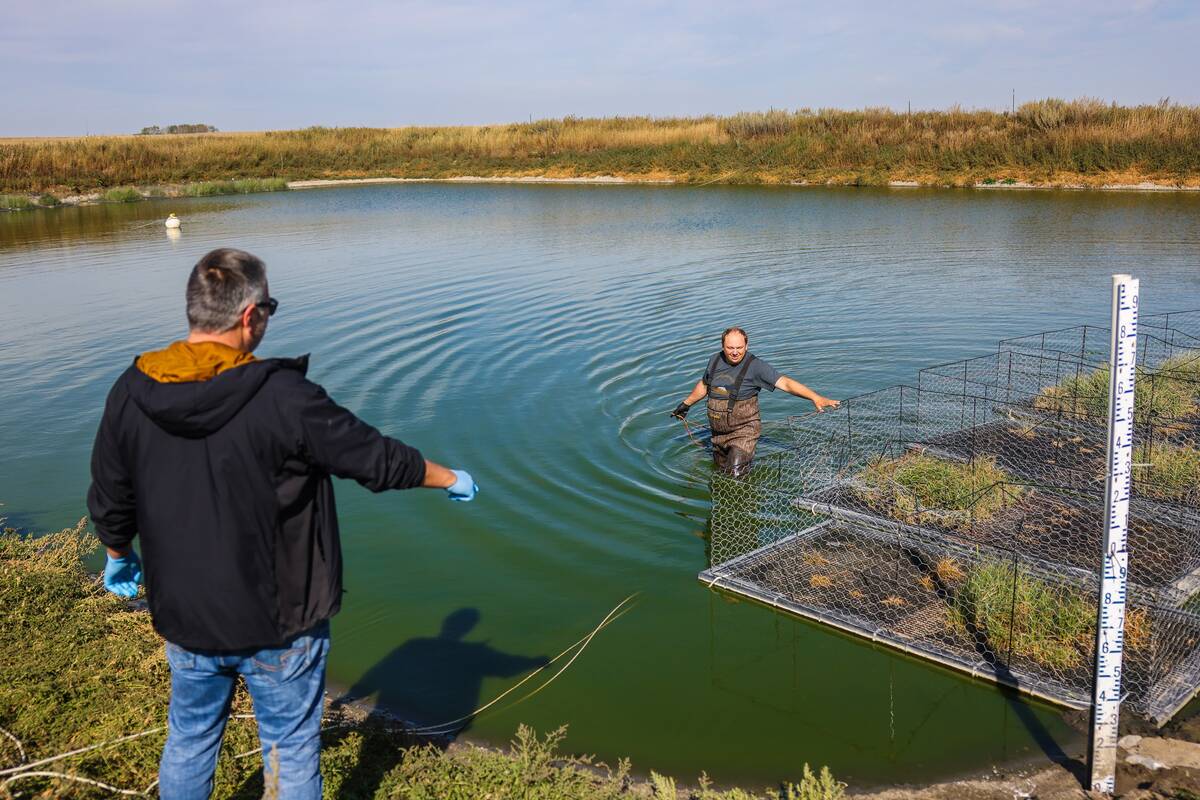
Preliminary results
Olds College researchers had good results from the first two phases of the study, and so had high expectations moving into the third phase.
They trialed seven different plants on the islands but found the most effective plant was Baltic rush. Runners-up included water sedge and wheat sedge.
All the plants they chose were native to North America, and so were cold-resistant.
Preliminary results found plants removed around 69 per cent more ammonia, 55 per cent more phosphorus and 27 per cent more nitrogen than the control ponds. For minerals, they found the floating islands removed 93 per cent more copper, 81 per cent more aluminum and 77 per cent more zinc than the control pond.
These findings are significant because all these things can be harmful and potentially fatal to livestock at high concentrations.
The native plants also reduced chemical run-off and blue-green algae, as well as eutrophication, which is when excess nutrients, such as phosphorus or nitrogen, cause excessive growth of plants and algae.
Benefits
While this research focused on the feedlot sector, Karran says he could see a benefit on other operations.
“We’re also thinking that these technologies could be very viable for farm dugouts on cow-calf operations to remove contaminants that can be harmful to the animals and make the water more suitable for remote farm dugouts where you might not have any real control over the water quality.”
One of the benefits of these islands is they are passive, so they can go into a dugout and be left there to do their thing for the rest of the summer.
“They don’t require a ton of maintenance. And relative to other water treatment technologies, they could be quite affordable.”
The plants farmers and ranchers would use on the island would depend on their situation and location. While Baltic rush performed the best in the Olds College research, other plants might work better in other locations or for other situations. For example, “if you’re targeting, let’s say sulphates, there might be another plant that is better.”
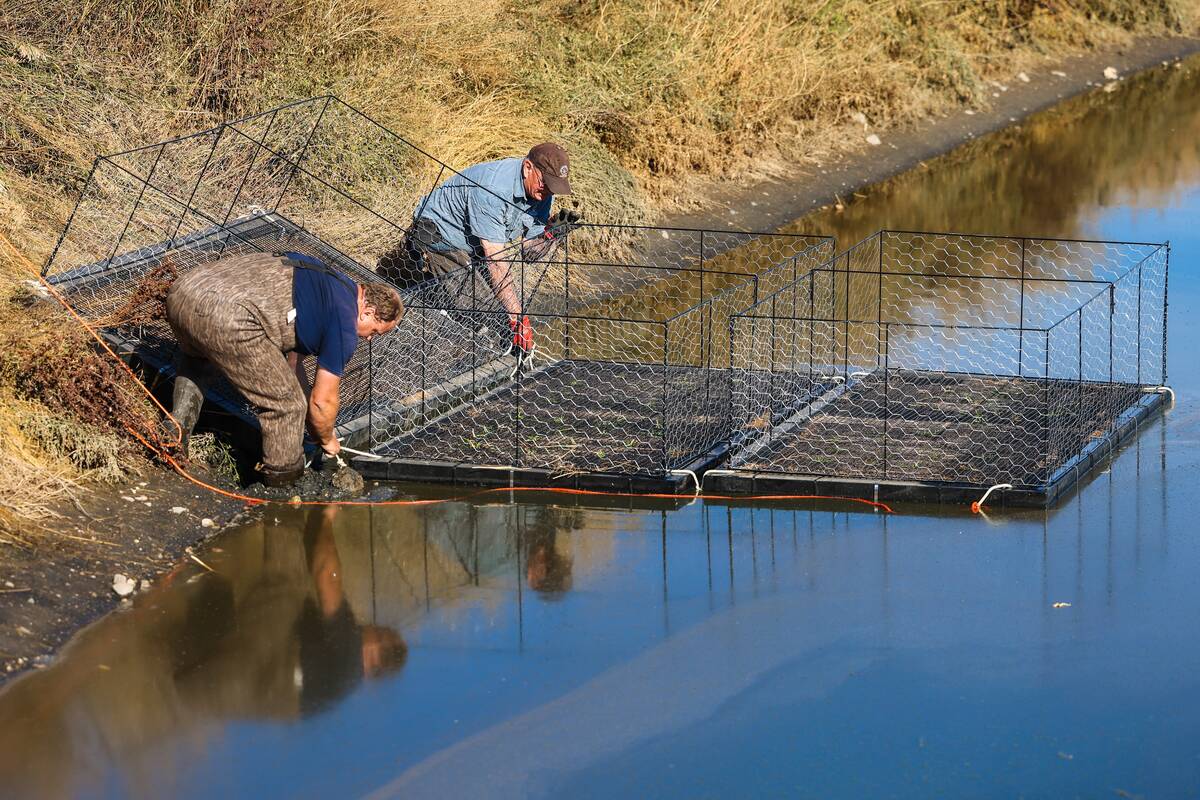
Economic analysis
Now that they have preliminary results, Karran says they will be compiling all the data into a report that will be available this fall.
Currently, though, he wants to do an economic analysis to examine what the cost-benefit is for using these islands, to see what scale at which you could use them at a feedlot, and if it is economically viable for other sectors of the industry to incorporate this technology.
“What’s the return on investment? How do they compare to alternative water treatment technologies that might be available for this sort of thing?”
He also wants to look at how this technology can transfer to other sectors of the industry.
The final report from the project should be available in September 2025.


